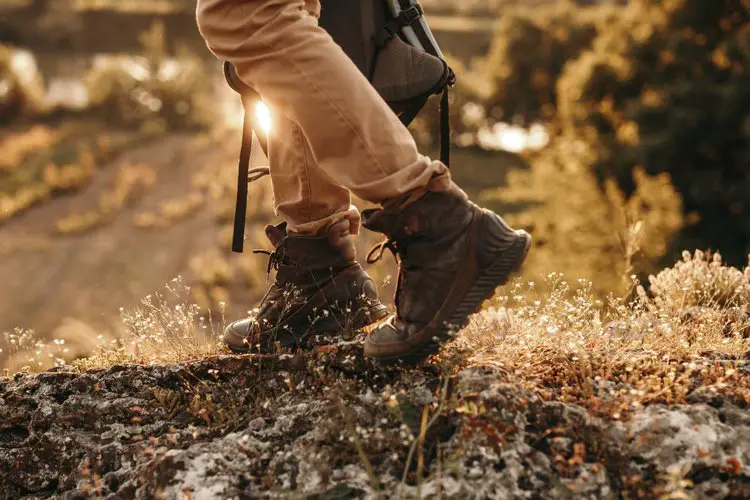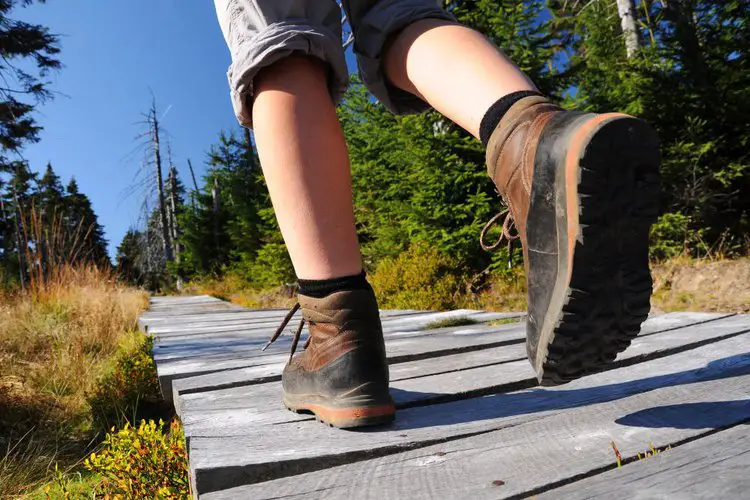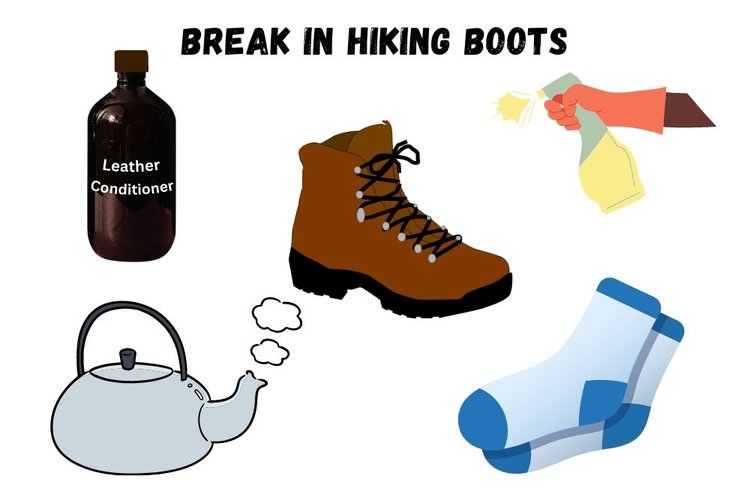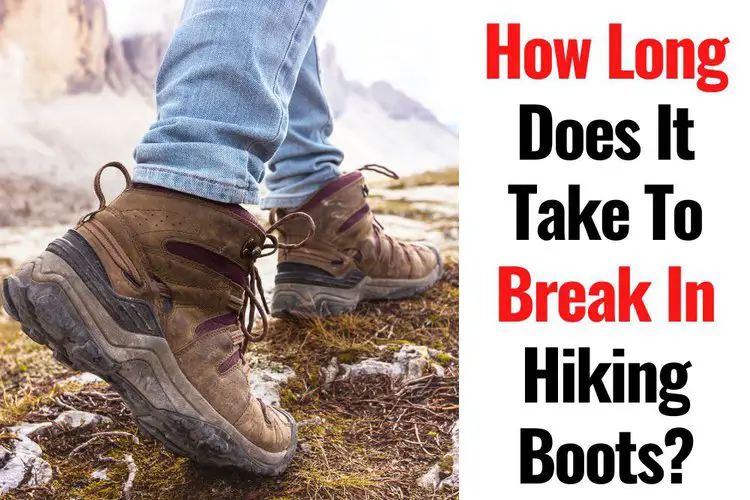Hiking boots are an essential part of your gear when going on a hike. They are responsible for protecting your feet, ankles, and legs, as well as providing support and stability on the trail.
However, hiking boots can be stiff and uncomfortable when you first purchase them. This is why breaking in your hiking boots is so important.
In this article, we will be discussing how long it takes to break in hiking boots, how many miles you should walk in them before going on a long hike, and the best methods for speeding up the process.
Key Takeaways:
- It takes an average of 3 to 7 weeks to break in hiking boots.
- It is recommended to walk at least 50 miles for hiking boots made from soft material (suede, split leather, or fabric and nylon) and 100 miles for stiff material (full grain leather, rough out, nubuck) before going on a long hike.
- There are several methods you can use to speed up the process of breaking in your hiking boots. You can expect the boots to be broken in within a few days to 2 weeks.
Contents
How Long Does it Take to Break In Hiking Boots?
Based on my experience, it takes several days to a few weeks to break in hiking boots. Meanwhile, many experts and experienced hikers suggest you might need 3 to 7 weeks of consistent use for hiking boots to be fully broken in.
Some people may find that their boots are comfortable from the first day, while others may take several weeks to break in their boots.

During this time, it’s important to pay close attention to any discomfort or pain and adjust the lacing, padding, and other elements as needed to ensure a comfortable fit.
We can’t have a specific time for breaking in all hiking boots as it depends on several factors such as the type of boots you have, your foot shape and size, and the type of hiking you will be doing.
One of the main factors that can affect the break-in time is the type of leather used.
Stiff leathers typically take longer to break in and may be more uncomfortable during the process.
- Full-Grain leather: This leather is the most durable and long-lasting but can take longer to break in.
- Nubuck leather: It has a suede-like finish and is known for its durability and resistance to moisture.
- Roughout leather: This type of leather is tough and water-resistant, but can take a long time to break in and may feel stiff at first.
Last update on 2023-11-10 / Affiliate links / Images from Amazon Product Advertising API
Soft, supple leathers or nylon, on the other hand, tend to be more comfortable and require less break-in time.
- Suede leather: It is soft and flexible, making it a good option for those who prefer a more comfortable and broken-in feel right out of the box.
- Split leather: This leather is made from the fibrous underside of the hide and is often treated to increase its durability. Although it may feel soft and supple, it is not as durable as full-grain leather.
- Nylon or fabric: These materials are generally more flexible than leather ones and tend to break in faster, often within a few hikes or walks.
Last update on 2023-11-10 / Affiliate links / Images from Amazon Product Advertising API
It’s also worth considering the frequency and intensity of use. If you wear your hiking boots every day for long periods of time, you can expect the break-in process to happen quicker than if you only wear them once or twice a week for a shorter time.
The same goes for the intensity of use – if you’re taking on challenging terrain, your boots will likely break in faster than if you’re mostly walking on flat, easy terrain.
How Many Miles Should You Walk In Your Hiking Boots Before Going on a Long Hike?
It’s generally recommended that you walk around 100 miles in your hiking boots before embarking on a long hike. This will give the boots time to break in and mold to your feet, reducing the likelihood of blisters and other foot injuries.

Boots made with stiff leather may take longer to break in and may require walking more miles before they feel comfortable. Boots made with more flexible materials, such as suede or nylon, may only need to be worn for a few short hikes to break in.
Stiff leathers may take up to 150 miles to be fully broken in. They require more time and effort to break in but once they do, they will provide a more stable and secure fit.
Soft leathers, nylon, or fabric are more pliable and may only take up to 50 miles to complete the break-in process. They are more comfortable from the start but may not provide as much support as stiff leather.
Speed-Up Methods for Breaking in Hiking Boots
In fact, the greatest way to break in your hiking boots is to use your feet! Just walk in them and they will mold to your feet for the best comfort!

However, if someone doesn’t have too much time, they can use some methods below to speed up the process. With these methods, you can expect hiking boots to be broken in within a few days to 2 weeks:
- Wear them on short walks and gradually increase the distance
- Use a boot-stretching product or stretching spray
- Use leather conditioner to soften your boots faster
- Wear thick socks or insoles
- Steam your hiking boots
- …
We already have an article on how to break in hiking boots fast and effectively, you can see the full guide here!
But remember, do it slowly and carefully! Or else, these methods can make your boots overstretch!
Last words
When selecting a pair of hiking boots, it is recommended to consider the type of material used and your personal preferences.
Some hiking boots come with built-in speed-up break-in methods, such as using soft, supple leather that is designed to conform to your feet faster.
In these cases, the recommended number of miles before a long hike may be lower.
It’s important to remember that the breaking-in process needs time, so be patient! Don’t rush to jump into long hikes with your new and uncomfortable hiking boots.
Also, don’t forget to take breaks and rest your feet throughout the breaking-in process to prevent injuries.
That’s it!


